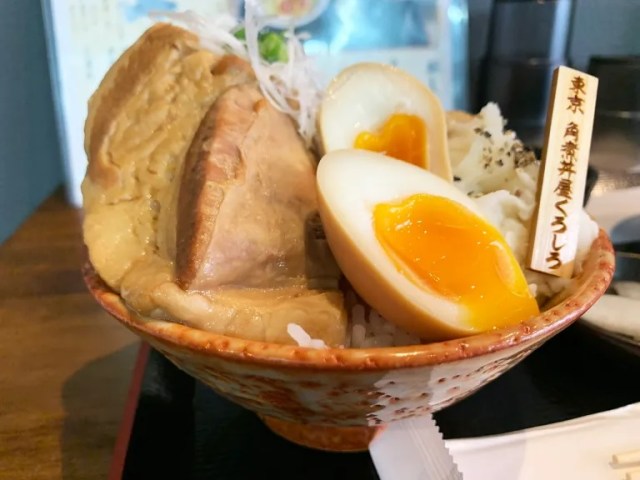
Located in a quiet part of a student neighborhood, this is where our kakuni dreams came true.
Kankuni is one of Japan’s most decadent foods. Thick cuts of braised pork belly simmered in a broth that includes soy sauce, mirin (cooking sake), and dashi (bonito stock), good kakuni is moist, meaty, tender, and tremendously filling.
All of those mouthwatering qualities were recently running through the head of our Japanese-language reporter Seiji Nakazawa. But perhaps because it’s so decadent, you’ll often find kakuni as a side dish, not the centerpiece of a meal. Seiji, though, wanted his kakuni to take center stage, and so he went on popular restaurant website Tabelog to look for a restaurant that specializes in kakuni rice bowls, which is when he found out that in all of Tokyo’s, there’s only one kakuni bowl specialist.
Luckily for Seiji, the city’s one-and-only kakuni bowl specialty restaurant is located in the Takadanobaba neighborhood, not far from SoraNews24 headquarters. So when lunchtime rolled around, Seiji hopped on the train for Takadanobaba Station. “Baba,” as the locals sometimes call it, is a student town, with the prestigious Waseda University nearby as well as a number of specialized schools. However, the restaurant, called Kuroshiro, is about a 15-minute walk to the southwest from the station, away from the hustle and bustle of commuting or carousing college kids.
Kuroshiro has a very low-key exterior, with an unmarked sun-faded awning and equally unassuming aluminum storefront sliding doors. Thankfully, a sidewalk signboard with the restaurant’s name (くろしろ) and a flag announcing kakuni bowls (角煮丼) told Seiji he’d arrived at the right place.
▼ Though the flag’s text was backwards from the angle he’d approached from.
In Japan, the basic foodie rule of thumb is that the more focused a restaurant’s menu is, the better job they do preparing those dishes. So Seiji was reassured when he saw that there are only two main dishes listed on Kuroshiro’s menu: the Kakuni Bowl Set Meal (角煮丼定食) and the Premium Kakuni Bowl Set Meal (特上角煮丼定食).
Something else drew his attention too, though: the price. The standard Kakuni Bowl Set Meal is 1,700 yen (US$11.30), and the Premium, which is essentially an extra-large portion of kakuni, is 2,800. Those aren’t cheap prices for a casual restaurant in a casual part of town. However, since this is Tokyo’s only kakuni specialist, Seiji felt like he should see it at its very best, so he ordered the Premium.
Still, at this price point Seiji was hoping that Kuroshiro would provide him with both quantity and quality. Thankfully, it didn’t take long for them to deliver on the first part of that promise.
As soon as the server placed Seiji’s meal in front of him, he was filled with startled excitement at the amount of meat. This is some jumbo-sized kakuni, not just in terms of surface area, but in thickness of the cuts too.
▼ It even comes with a little wooden sign that announces its presence with “Tokyo Kakuni Bowl Restaurant Kuroshiro.”
Between the shape and the size of the pieces of pork, Seiji felt like he had a kakuni mountain range in his bowl.
Of course, this feast for the eyes would quickly become a dagger in his heart if the beautiful-looking meat turned out to be of poor quality. Though Seiji loves kakuni, he’ll be the first to tell you that not every restaurant does a good job with it, and if you’re unlucky you can end up with tough, stringy pork.
Seiji intended to test the tenderness of Kuroshiro’s kakuni, which he intended to do by taking a tentative bite…but he actually didn’t even need to go that far because as soon as he touched the pork with his chopsticks…
…it jiggled, revealing its tantalizingly tender texture!
Now knowing that the kakuni both looked good and felt good, Seiji was happy, but not surprised, when he did take a bite and confirmed that it tasted great too. In fact, it was so good that it brightened up not only his day, but his outlook on life. Seiji’s been a little down in the dumps lately, feeling like he’s in a bit of a rut. Going out and finding exactly what he’d been searching for, though, and having it exceed all of his expectations, served as a reminder that there are still great things out there waiting for you to find them.
OK, so Kushiro is definitely worth visiting. There’s one thing to keep in mind, though. Remember how we mentioned the non-descript building exterior? That’s because Kushiro is only open from 11:30 a.m. to 2 p.m., with a different restaurant operating in the same space at night, so you’ll need to get your kakuni fix at lunchtime. The good news is that Kuroshiro is planning to open a second branch, one closer to Takadanobaba Station, next month, but for now this one is still Tokyo’s only kakuni bowl specialist.
Restaurant information
Kuroshiro / くろしろ
Address: Tokyo-to, Shinjuku-ku, Takadanobaba 3-37-2
東京都新宿区高田馬場3-37-2
Open 11 :30 a.m.-2 p.m. (last order 1:30 p,m,)
Closed Mondays, Wednesdays
Photos ©SoraNews24
● Want to hear about SoraNews24’s latest articles as soon as they’re published? Follow us on Facebook and Twitter!
[ Read in Japanese ]



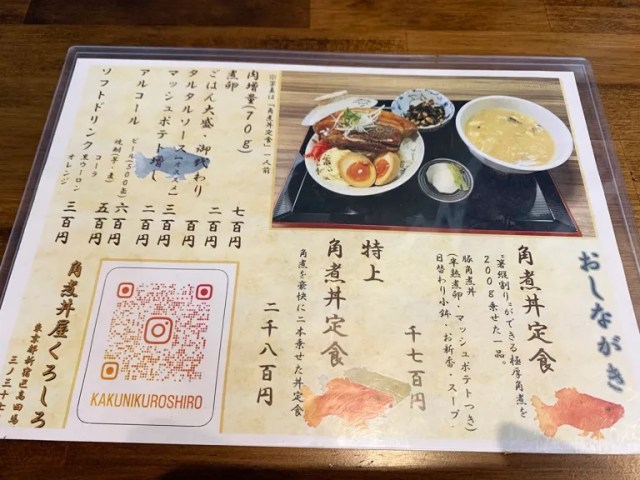
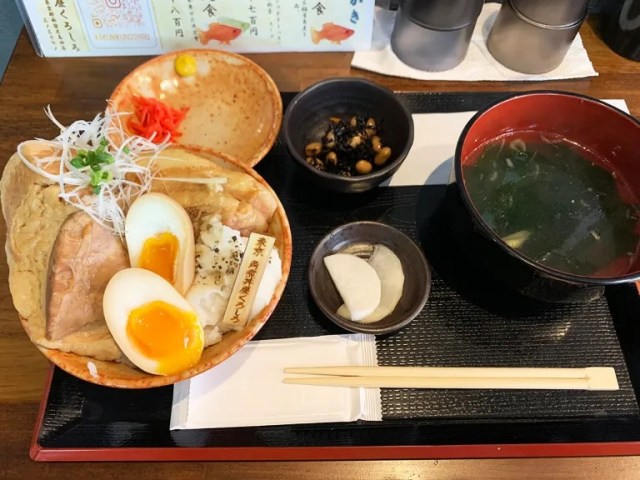
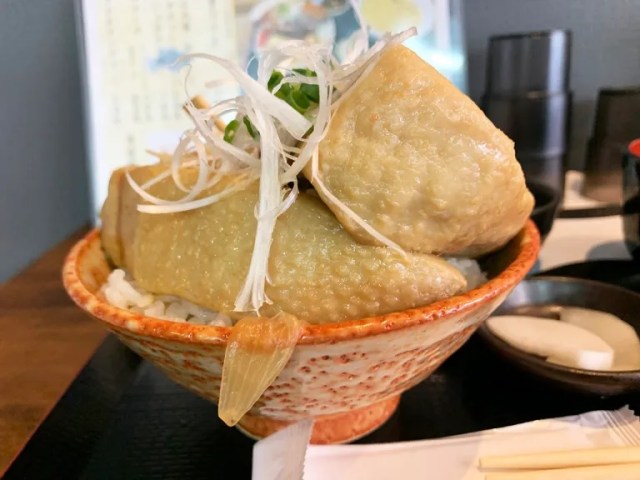
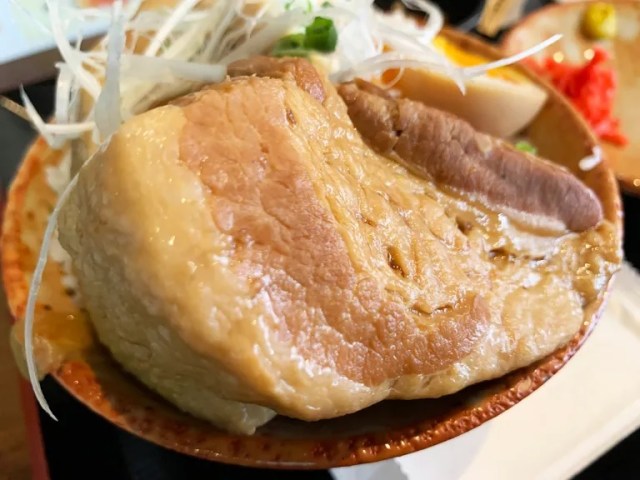
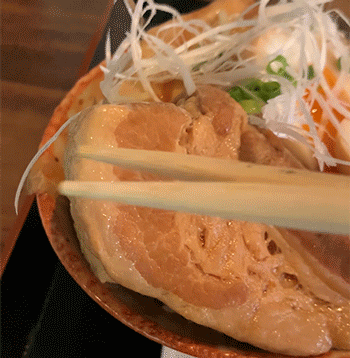
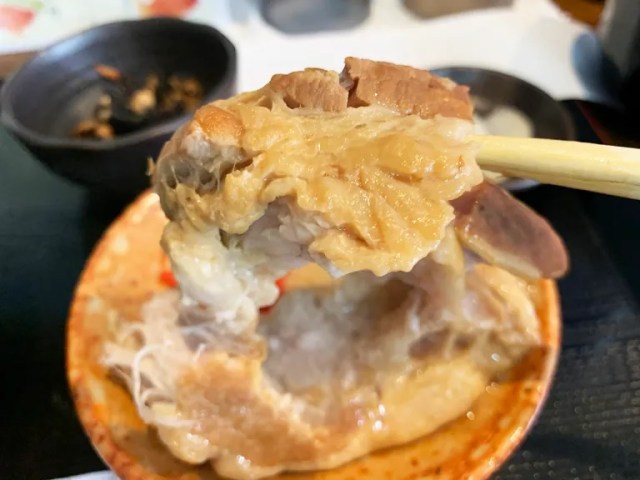
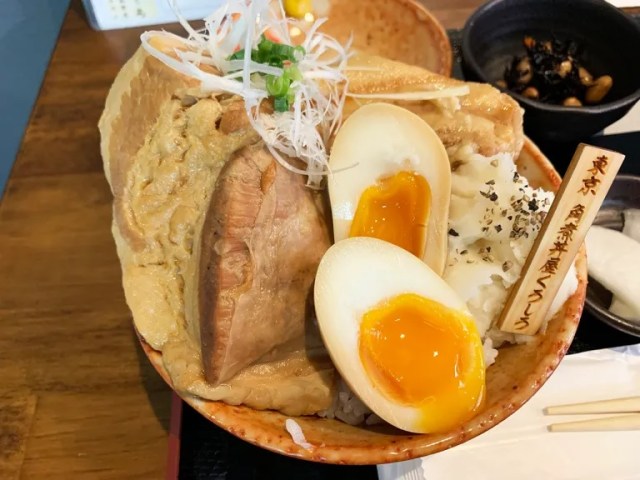
 Power up with this positively scrumptious kakuni braised pork Pac-Man manju from Nagasaki
Power up with this positively scrumptious kakuni braised pork Pac-Man manju from Nagasaki Which convenience store has the best kakuni Japanese braised pork? We find out【Taste test】
Which convenience store has the best kakuni Japanese braised pork? We find out【Taste test】 This amazing bowl of meaty ramen? Made entirely with Japanese convenience store stuff
This amazing bowl of meaty ramen? Made entirely with Japanese convenience store stuff Melon bread showdown! Which Japanese convenience store melon pan is the one for you?【Taste test】
Melon bread showdown! Which Japanese convenience store melon pan is the one for you?【Taste test】 Meatless meat buns fill Japanese Internet with joy
Meatless meat buns fill Japanese Internet with joy Foreigner’s request for help in Tokyo makes us sad for the state of society
Foreigner’s request for help in Tokyo makes us sad for the state of society Japanese city loses residents’ personal data, which was on paper being transported on a windy day
Japanese city loses residents’ personal data, which was on paper being transported on a windy day Seaside scenery, history, and so many desserts on Yokohama’s Akai Kutsu【Japan Loop Buses】
Seaside scenery, history, and so many desserts on Yokohama’s Akai Kutsu【Japan Loop Buses】 Ghibli Park now selling “Grilled Frogs” from food cart in Valley of Witches
Ghibli Park now selling “Grilled Frogs” from food cart in Valley of Witches Historical figures get manga makeovers from artists of Spy x Family, My Hero Academia and more
Historical figures get manga makeovers from artists of Spy x Family, My Hero Academia and more Suntory x Super Mario collaboration creates a clever way to transform into Mario【Videos】
Suntory x Super Mario collaboration creates a clever way to transform into Mario【Videos】 Akihabara pop-up shop sells goods made by Japanese prison inmates
Akihabara pop-up shop sells goods made by Japanese prison inmates Japan’s massive matcha parfait weighs 6 kilos, contains hidden surprises for anyone who eats it
Japan’s massive matcha parfait weighs 6 kilos, contains hidden surprises for anyone who eats it New adorable, two-color Vulpix airplane will take you to Hokkaido, not even for a limited time
New adorable, two-color Vulpix airplane will take you to Hokkaido, not even for a limited time Japan removes tour guide requirement for foreign tourists
Japan removes tour guide requirement for foreign tourists McDonald’s new Happy Meals offer up cute and practical Sanrio lifestyle goods
McDonald’s new Happy Meals offer up cute and practical Sanrio lifestyle goods Japanese ramen restaurants under pressure from new yen banknotes
Japanese ramen restaurants under pressure from new yen banknotes French Fries Bread in Tokyo’s Shibuya becomes a hit on social media
French Fries Bread in Tokyo’s Shibuya becomes a hit on social media Studio Ghibli releases new action figures featuring Nausicaä of the Valley of the Wind characters
Studio Ghibli releases new action figures featuring Nausicaä of the Valley of the Wind characters New private rooms on Tokaido Shinkansen change the way we travel from Tokyo to Kyoto
New private rooms on Tokaido Shinkansen change the way we travel from Tokyo to Kyoto Red light district sushi restaurant in Tokyo shows us just how wrong we were about it
Red light district sushi restaurant in Tokyo shows us just how wrong we were about it Tokyo Tsukiji fish market site to be redeveloped with 50,000-seat stadium, hotel, shopping center
Tokyo Tsukiji fish market site to be redeveloped with 50,000-seat stadium, hotel, shopping center All-you-can-drink Starbucks and amazing views part of Tokyo’s new 170 meter-high sky lounge
All-you-can-drink Starbucks and amazing views part of Tokyo’s new 170 meter-high sky lounge Beautiful Ghibli sealing wax kits let you create accessories and elegant letter decorations【Pics】
Beautiful Ghibli sealing wax kits let you create accessories and elegant letter decorations【Pics】 Studio Ghibli releases Kiki’s Delivery Service chocolate cake pouches in Japan
Studio Ghibli releases Kiki’s Delivery Service chocolate cake pouches in Japan New definition of “Japanese whiskey” goes into effect to prevent fakes from fooling overseas buyers
New definition of “Japanese whiskey” goes into effect to prevent fakes from fooling overseas buyers Our Japanese reporter visits Costco in the U.S., finds super American and very Japanese things
Our Japanese reporter visits Costco in the U.S., finds super American and very Japanese things Studio Ghibli unveils Mother’s Day gift set that captures the love in My Neighbour Totoro
Studio Ghibli unveils Mother’s Day gift set that captures the love in My Neighbour Totoro More foreign tourists than ever before in history visited Japan last month
More foreign tourists than ever before in history visited Japan last month New Pokémon cakes let you eat your way through Pikachu and all the Eevee evolutions
New Pokémon cakes let you eat your way through Pikachu and all the Eevee evolutions Sales of Japan’s most convenient train ticket/shopping payment cards suspended indefinitely
Sales of Japan’s most convenient train ticket/shopping payment cards suspended indefinitely Sold-out Studio Ghibli desktop humidifiers are back so Totoro can help you through the dry season
Sold-out Studio Ghibli desktop humidifiers are back so Totoro can help you through the dry season Japanese government to make first change to romanization spelling rules since the 1950s
Japanese government to make first change to romanization spelling rules since the 1950s Ghibli founders Toshio Suzuki and Hayao Miyazaki contribute to Japanese whisky Totoro label design
Ghibli founders Toshio Suzuki and Hayao Miyazaki contribute to Japanese whisky Totoro label design Doraemon found buried at sea as scene from 1993 anime becomes real life【Photos】
Doraemon found buried at sea as scene from 1993 anime becomes real life【Photos】 Tokyo’s most famous Starbucks is closed
Tokyo’s most famous Starbucks is closed One Piece characters’ nationalities revealed, but fans have mixed opinions
One Piece characters’ nationalities revealed, but fans have mixed opinions We asked a Uniqlo employee what four things we should buy and their suggestions didn’t disappoint
We asked a Uniqlo employee what four things we should buy and their suggestions didn’t disappoint Princesses, fruits, and blacksmiths: Study reveals the 30 most unusual family names in Japan
Princesses, fruits, and blacksmiths: Study reveals the 30 most unusual family names in Japan “Hey, Japanese taxi driver, take us to the best Sapporo ramen place!” – Things don’t go as planned
“Hey, Japanese taxi driver, take us to the best Sapporo ramen place!” – Things don’t go as planned Yaizu: Japan’s best sushi market destination even most foodies in Japan have never heard of
Yaizu: Japan’s best sushi market destination even most foodies in Japan have never heard of Japanese curry chain is highly recommended by foreigners on Reddit, but is it any good?
Japanese curry chain is highly recommended by foreigners on Reddit, but is it any good? Noodle joint in Harajuku becomes a hot topic with foreigners on Reddit, but is it any good?
Noodle joint in Harajuku becomes a hot topic with foreigners on Reddit, but is it any good? This London ramen restaurant’s super-strange ramen shocks our Japanese taste-tester
This London ramen restaurant’s super-strange ramen shocks our Japanese taste-tester The SoraNews24 secret technique for staying warm in your office this winter【Experiment】
The SoraNews24 secret technique for staying warm in your office this winter【Experiment】 The best soba restaurant on Yakushima island, according to locals
The best soba restaurant on Yakushima island, according to locals Man or pan? Japan’s new meatless meat buns confuse our taste-tester
Man or pan? Japan’s new meatless meat buns confuse our taste-tester Does US$50 canned wagyu beef make for a great beef bowl? We find out【Taste test】
Does US$50 canned wagyu beef make for a great beef bowl? We find out【Taste test】 Japanese ramen chain becomes a hot topic with foreigners on Reddit, but is it any good?
Japanese ramen chain becomes a hot topic with foreigners on Reddit, but is it any good? Does Tokyo’s King of Tonkatsu live up to its name? We find out 【Taste Test】
Does Tokyo’s King of Tonkatsu live up to its name? We find out 【Taste Test】 Japanese curry chain becomes a hot topic with foreigners on Reddit, but is it any good?
Japanese curry chain becomes a hot topic with foreigners on Reddit, but is it any good? Crazy expensive “phantom beef” instant curry — Dream come true or edible nightmare?【Taste test】
Crazy expensive “phantom beef” instant curry — Dream come true or edible nightmare?【Taste test】 Japanese convenience store pasta called “a monstrosity” by foreigners online
Japanese convenience store pasta called “a monstrosity” by foreigners online “Hey, Japanese taxi driver, take us to the best seafood joint in Otaru!”
“Hey, Japanese taxi driver, take us to the best seafood joint in Otaru!”
Leave a Reply